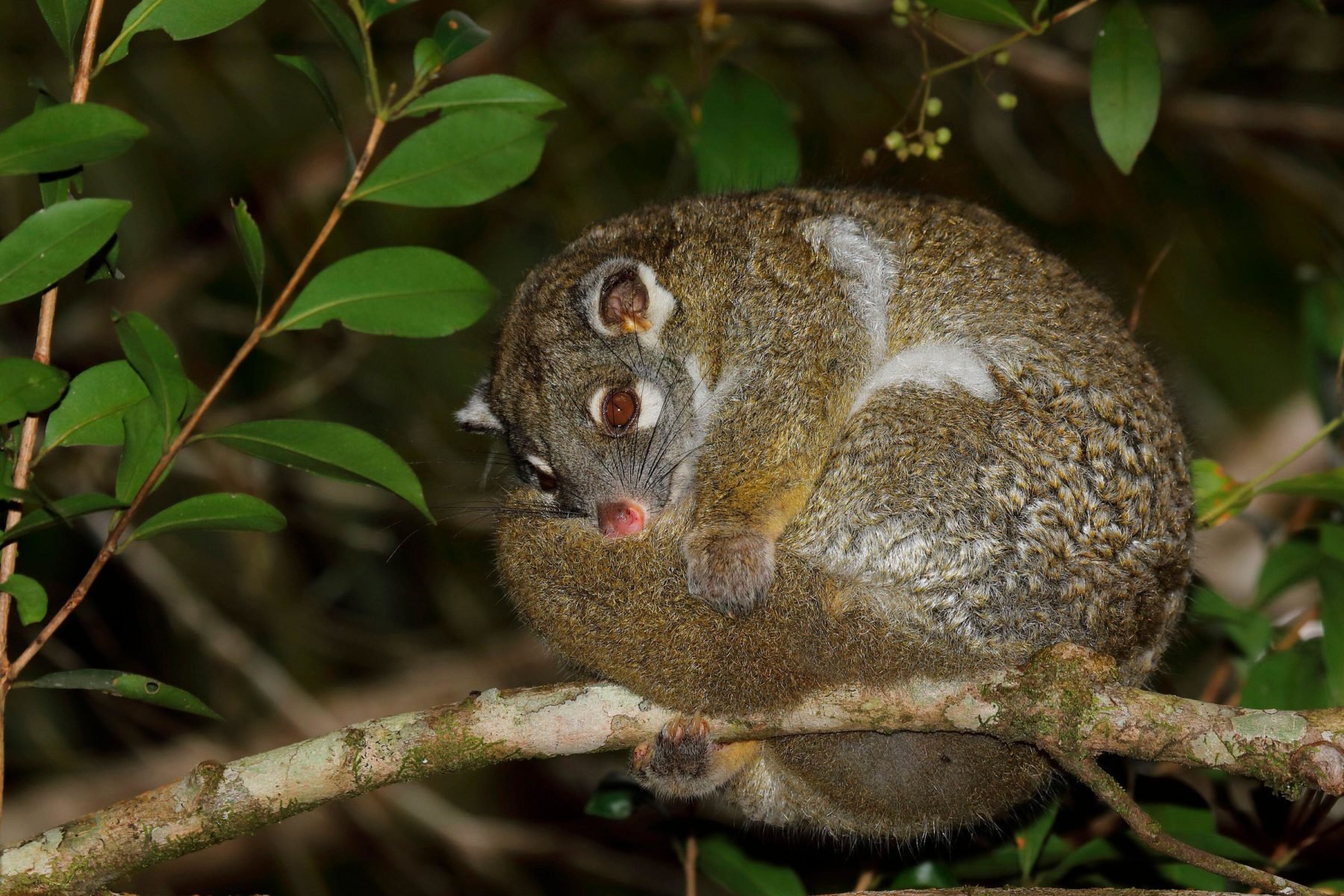The green ringtail possum is chonky

Bec Crew
Bec Crew

Meet the green ringtail possum (Pseudochirops archeri), a hefty species found in only one place in the world: a tiny pocket of tropical rainforest in north-eastern Queensland.
A true tree-dweller, this shy creature spends most of its life in the trees – it only descends to the forest floor on the very rare occasion that it can’t climb or leap from one tree to the next.
To live this arboreal lifestyle, the green ringtail possum has figured out how to sleep very comfortably propped in the fork of a tree. It uses its fluffy tail as cushioning and rolls itself into a ball, tucking its face, front legs and the end of its tail tightly against its stomach. Its two back legs are used to grip onto the tree, and it will hold itself like this all day, ready to spring into activity at nightfall.
Here’s a good example of this behaviour (although I’m sure this particular possum is wishing it had a fork of branches to snuggle up into):

The olive-green tinge that you can see on its fur gives this possum excellent camouflage, which is important when you’re too hefty to obscure yourself in a hollowed-out tree, for example.
These gentle giants are known prey of formidable predators such as rufous owls, carpet pythons and spotted-tailed quolls, which are also partial to another of Australia’s large possum species, the greater glider.
Green ringtail possums are primarily foliovorous (leaf-eating). In fact, they’re the only known possum to eat fig leaves (sometimes it’ll treat itself to a ripe fig or two).
It’s also one of few known species to have adapted to feeding on the leaves of the stinging trees, Dendrocnide moroides and Dendrocnide cordifolia. Members of the nettle family, the leaves of these trees are covered in painful, prickly hairs that, if touched by humans, will require urgent medical attention.
“Slight contact with human skin produces an extremely painful, burning sensation, caused by toxins injected via silicon hairs that densely cover the leaf surface,” researcher Marina Hurley wrote in a 2000 paper. “Severe contact causes excruciating pain often requiring urgent medical attention and can cause death in humans and dogs and horses.”
If that sounds like an unappetising meal, the green ringtail possum can do us one better – not only does it eat deadly stinging nettle, but it also eats its own faeces. It does this to capture any nutrients it might have missed the first time. In nature, you gotta do what you gotta do. And finally, to give you an idea of how big these possums are, here’s some rare footage of a green ringtail possum active during the day:





